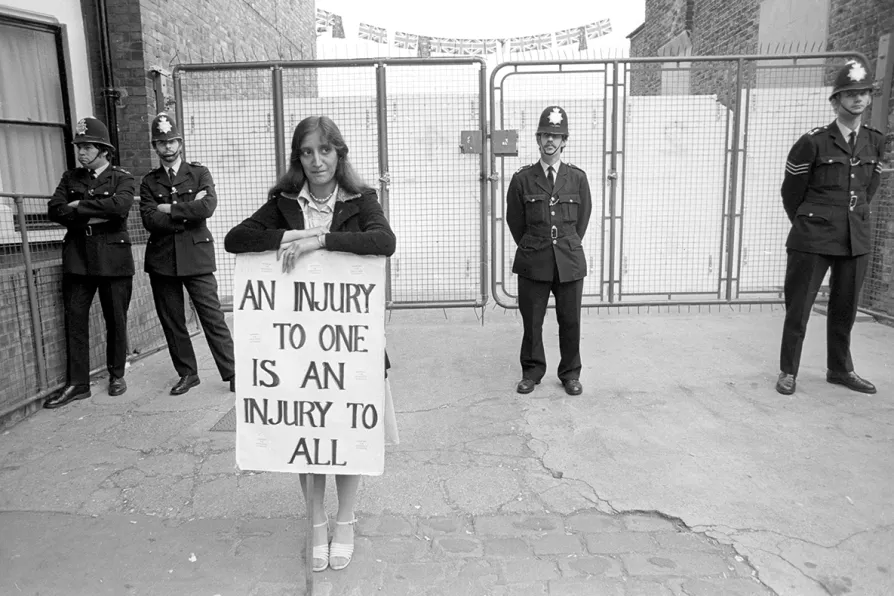Apart from a bright spark of hope in the victory of the Gaza motion, this year’s conference lacked vision and purpose — we need to urgently reconnect Labour with its roots rather than weakly aping the flag-waving right, argues KIM JOHNSON MP

 FAMOUR FIGHT: A lone picket is watched by police outside the entrance to the Grunwick film processing plant, July 1977
FAMOUR FIGHT: A lone picket is watched by police outside the entrance to the Grunwick film processing plant, July 1977
I HAVE been looking again through the inches-thick government papers on the 1976-78 Grunwick strike because they give clues to how Labour governments can respond to big strikes.
The papers show that the police carried out intense political surveillance of the strike. They filed reports full of both detail and absurd rumours — like their fears of trade unionists mobilising hit squads of female plumbers or schoolchildren to cause havoc — which Labour ministers accepted without question.
The Grunwick dispute started when a largely Asian workforce in a north London factory went on strike to support a sacked colleague.

The new angle from private firms shmoozing their way into public contracts was the much-trumpeted arrival of ‘artificial intelligence’ — and no-one seemed to have heard the numerous criticisms of this unproven miracle cure, reports SOLOMON HUGHES

It is rather strange that Labour continues to give prestigious roles to inappropriate, controversy-mired businessmen who are also major Tory donors. What could Labour possibly be hoping to get out of it, asks SOLOMON HUGHES

Keir Starmer’s hiring Tim Allan from Tory-led Strand Partners is another illustration of Labour’s corporate-influence world where party differences matter less than business connections, writes SOLOMON HUGHES

MBDA’s Alabama factory makes components for Boeing’s GBU-39 bombs used to kill civilians in Gaza. Its profits flow through Stevenage to Paris — and it is one of the British government’s favourite firms, reveals SOLOMON HUGHES















